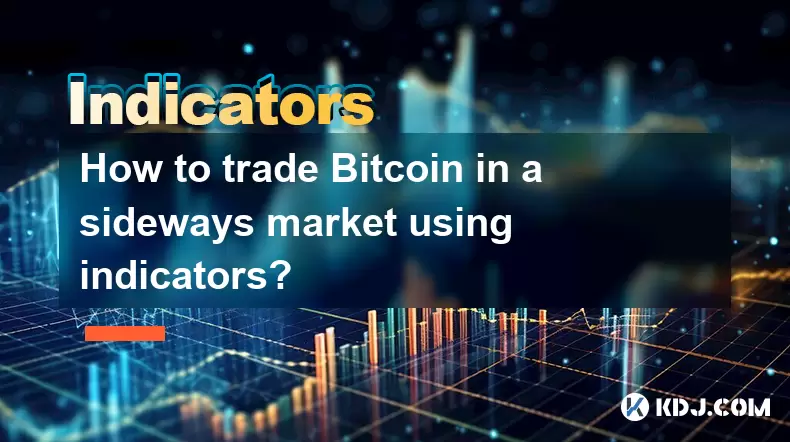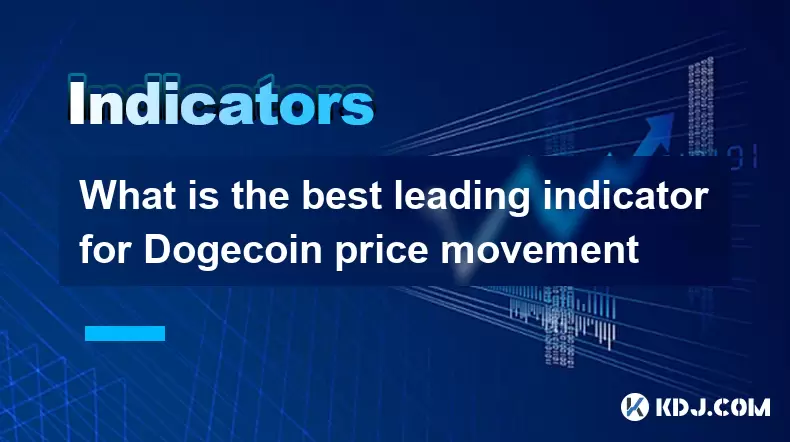-
 Bitcoin
Bitcoin $108,250.0992
0.11% -
 Ethereum
Ethereum $2,515.9404
0.03% -
 Tether USDt
Tether USDt $1.0003
0.00% -
 XRP
XRP $2.2166
-0.19% -
 BNB
BNB $656.5904
0.29% -
 Solana
Solana $147.4122
-0.58% -
 USDC
USDC $1.0000
-0.01% -
 TRON
TRON $0.2830
0.06% -
 Dogecoin
Dogecoin $0.1641
0.27% -
 Cardano
Cardano $0.5739
-0.19% -
 Hyperliquid
Hyperliquid $39.1463
-0.11% -
 Sui
Sui $2.8882
-0.02% -
 Bitcoin Cash
Bitcoin Cash $487.6428
0.31% -
 Chainlink
Chainlink $13.2097
0.07% -
 UNUS SED LEO
UNUS SED LEO $9.0308
0.10% -
 Avalanche
Avalanche $17.8608
0.13% -
 Stellar
Stellar $0.2379
-0.06% -
 Toncoin
Toncoin $2.7400
-0.39% -
 Shiba Inu
Shiba Inu $0.0...01144
-0.36% -
 Litecoin
Litecoin $87.5467
0.66% -
 Hedera
Hedera $0.1538
0.22% -
 Monero
Monero $315.5479
0.36% -
 Dai
Dai $1.0000
0.00% -
 Polkadot
Polkadot $3.3523
-0.71% -
 Ethena USDe
Ethena USDe $1.0003
0.01% -
 Bitget Token
Bitget Token $4.3960
-1.03% -
 Uniswap
Uniswap $7.2663
4.19% -
 Aave
Aave $272.8619
2.04% -
 Pepe
Pepe $0.0...09676
-0.18% -
 Pi
Pi $0.4586
-2.87%
How to trade Bitcoin in a sideways market using indicators?
In a sideways Bitcoin market, traders can profit by buying near support and selling near resistance, using indicators like RSI, Bollinger Bands, and MACD to confirm entry and exit points.
Jul 06, 2025 at 11:22 am

Understanding the Characteristics of a Sideways Market
A sideways market, also known as a range-bound market, is characterized by price movements that lack a clear upward or downward trend. In this environment, Bitcoin often oscillates between defined levels of support and resistance without breaking out. This type of market can be particularly challenging for traders who rely on momentum or breakout strategies.
In such conditions, traders must adapt their approach to avoid false breakouts and whipsaws. The key lies in identifying consolidation zones and using technical indicators to spot potential reversal points within the range. Unlike trending markets where moving averages help confirm direction, sideways movement requires more nuanced tools like Bollinger Bands, Relative Strength Index (RSI), and Moving Average Convergence Divergence (MACD).
Selecting the Right Indicators for Range Trading
To effectively trade Bitcoin in a sideways market, choosing the right set of indicators is crucial. Here are some of the most effective ones:
- Bollinger Bands: These bands expand and contract based on volatility. When the price touches the upper band, it may signal overbought conditions, while touching the lower band may indicate oversold levels.
- RSI (Relative Strength Index): Typically set at 14 periods, RSI helps identify overbought (>70) and oversold (<30) levels. In a sideways market, these thresholds become key decision points.
- MACD (Moving Average Convergence Divergence): While MACD is traditionally used in trending environments, its histogram and signal line crossovers can still provide useful insights when prices move laterally.
- Volume Indicators: Tools like On-Balance Volume (OBV) or simple volume bars help assess whether buying or selling pressure is increasing within the range.
Each of these indicators should be used together to filter out noise and confirm signals before entering trades.
Setting Up Your Chart for Effective Range Trading
Before diving into actual trading, setting up your chart correctly is essential. Begin with a time frame that suits your strategy—1-hour or 4-hour charts are commonly used for intraday and swing trading in sideways conditions.
Here’s how to configure your chart:
- Apply Bollinger Bands with default settings (20-period SMA and 2 standard deviations).
- Overlay the RSI indicator beneath the price chart, ensuring it's set to 14 periods.
- Add the MACD indicator below RSI, using the standard configuration (12, 26, 9).
- Enable volume bars or OBV if you want to monitor sentiment shifts.
Once your chart is ready, draw horizontal lines at recent support and resistance levels to define the trading range. These lines act as reference points for entry and exit decisions.
Executing Trades Based on Indicator Signals
Trading Bitcoin in a sideways market involves buying near support and selling near resistance. However, not every touch of these levels results in a successful trade. Using indicator confirmation increases the probability of success.
When considering a long position:
- Wait for the price to reach or approach the support level.
- Check if RSI dips below 30, indicating oversold conditions.
- Look for the price to rebound from the lower Bollinger Band.
- Confirm with a bullish MACD crossover or rising volume.
Conversely, for a short position:
- Watch the price approaching resistance.
- Ensure RSI climbs above 70, signaling overbought territory.
- Observe rejection at the upper Bollinger Band.
- Validate with a bearish MACD cross or increased selling volume.
It's important to note that false signals can occur frequently, especially during low liquidity or news events. Therefore, combining multiple indicators reduces the risk of entering premature or invalid trades.
Managing Risk and Position Sizing
Even with accurate indicators, trading in a sideways market carries risks due to frequent false breakouts and tight ranges. Proper risk management is vital to preserve capital and stay in the game.
Key risk management practices include:
- Setting stop-loss orders just beyond the support/resistance zone to limit downside.
- Keeping position sizes small enough so that a single losing trade doesn’t significantly impact your portfolio.
- Trailing stops dynamically as the price moves toward the opposite boundary.
- Avoiding leverage unless you have a strong conviction and strict stop-loss rules.
Using a fixed percentage of your account per trade (e.g., 1%–2%) ensures consistency and prevents emotional decision-making. Additionally, tracking each trade in a journal helps refine your strategy over time.
Frequently Asked Questions
Q: Can I use candlestick patterns alongside indicators in a sideways market?
Yes, candlestick patterns like pin bars, inside bars, and engulfing patterns can serve as additional confirmation when combined with technical indicators. For example, a bullish pin bar forming near support along with an RSI reading below 30 strengthens the case for a long trade.
Q: How do I know if the market is truly sideways and not about to break out?
Use multiple time frames to confirm the sideways behavior. If higher time frames like daily or weekly charts show no clear trend and price continues to respect support and resistance levels, it's likely a true range. Also, observe decreasing volatility through Bollinger Band width and declining volume.
Q: What time frame works best for trading Bitcoin in a sideways market?
The optimal time frame depends on your trading style. Day traders often prefer 15-minute or 1-hour charts, while swing traders might focus on 4-hour or daily intervals. Choose a time frame that aligns with your availability and risk tolerance.
Q: Should I avoid trading Bitcoin entirely if the market is sideways?
No, sideways markets offer opportunities to profit from predictable price bounces between support and resistance. By using indicators and proper risk controls, you can generate consistent returns even without a strong directional trend.
Disclaimer:info@kdj.com
The information provided is not trading advice. kdj.com does not assume any responsibility for any investments made based on the information provided in this article. Cryptocurrencies are highly volatile and it is highly recommended that you invest with caution after thorough research!
If you believe that the content used on this website infringes your copyright, please contact us immediately (info@kdj.com) and we will delete it promptly.
- Litecoin Breakout Watch: What Traders Need to Know Now
- 2025-07-06 16:50:13
- Bitcoin, Solana, Ethereum: Decoding the Latest Buzz on the Blockchain
- 2025-07-06 16:50:13
- Widnes Resident's 50p Could Be Your Ticket to Easy Street: Rare Coin Mania!
- 2025-07-06 16:55:13
- Bitcoin, Solaris Presale, and Token Rewards: What's the Buzz?
- 2025-07-06 16:55:13
- Ethereum Under Pressure: Price Drop Amid Global Uncertainties
- 2025-07-06 17:00:13
- XRP, SEC Case, and Prosperity: A New Era for XRP Holders?
- 2025-07-06 17:10:13
Related knowledge

How to spot manipulation on the Dogecoin chart
Jul 06,2025 at 12:35pm
Understanding the Basics of Chart ManipulationChart manipulation in the cryptocurrency space, particularly with Dogecoin, refers to artificial price movements caused by coordinated trading activities rather than genuine market demand. These manipulations are often executed by large holders (commonly known as whales) or organized groups aiming to mislead...

What is the significance of a Dogecoin engulfing candle pattern
Jul 06,2025 at 06:36am
Understanding the Engulfing Candle Pattern in CryptocurrencyThe engulfing candle pattern is a significant technical analysis tool used by traders to identify potential trend reversals in financial markets, including cryptocurrencies like Dogecoin. This pattern typically consists of two candles: the first one is relatively small and indicates the current...

Dogecoin monthly chart analysis for long term investors
Jul 06,2025 at 10:08am
Understanding the Dogecoin Monthly ChartFor long-term investors, analyzing the monthly chart of Dogecoin (DOGE) provides a macro view of its price behavior over extended periods. The monthly chart captures major trends, key resistance and support levels, and potential reversal zones that are crucial for strategic investment planning. Unlike daily or hou...

How to manage risk using ATR on Dogecoin
Jul 06,2025 at 02:35am
Understanding ATR in Cryptocurrency TradingThe Average True Range (ATR) is a technical indicator used to measure market volatility. Originally developed for commodities, it has found widespread use in cryptocurrency trading due to the high volatility inherent in digital assets like Dogecoin (DOGE). The ATR calculates the average range of price movement ...

Setting up a Dogecoin trading strategy in Pinescript
Jul 06,2025 at 05:00pm
Understanding Dogecoin and Its Place in the Cryptocurrency MarketDogecoin (DOGE) is a decentralized, peer-to-peer cryptocurrency that was initially created as a joke but has since gained significant traction in the crypto market. Despite its humorous origins, Dogecoin has been adopted by a large community and supported by notable figures such as Elon Mu...

What is the best leading indicator for Dogecoin price movement
Jul 06,2025 at 06:00pm
Understanding Leading Indicators in CryptocurrencyIn the world of cryptocurrency trading, leading indicators play a crucial role in forecasting price movements before they occur. These tools are used by traders to anticipate potential market changes and make informed decisions. For Dogecoin (DOGE), which is known for its volatile nature and strong commu...

How to spot manipulation on the Dogecoin chart
Jul 06,2025 at 12:35pm
Understanding the Basics of Chart ManipulationChart manipulation in the cryptocurrency space, particularly with Dogecoin, refers to artificial price movements caused by coordinated trading activities rather than genuine market demand. These manipulations are often executed by large holders (commonly known as whales) or organized groups aiming to mislead...

What is the significance of a Dogecoin engulfing candle pattern
Jul 06,2025 at 06:36am
Understanding the Engulfing Candle Pattern in CryptocurrencyThe engulfing candle pattern is a significant technical analysis tool used by traders to identify potential trend reversals in financial markets, including cryptocurrencies like Dogecoin. This pattern typically consists of two candles: the first one is relatively small and indicates the current...

Dogecoin monthly chart analysis for long term investors
Jul 06,2025 at 10:08am
Understanding the Dogecoin Monthly ChartFor long-term investors, analyzing the monthly chart of Dogecoin (DOGE) provides a macro view of its price behavior over extended periods. The monthly chart captures major trends, key resistance and support levels, and potential reversal zones that are crucial for strategic investment planning. Unlike daily or hou...

How to manage risk using ATR on Dogecoin
Jul 06,2025 at 02:35am
Understanding ATR in Cryptocurrency TradingThe Average True Range (ATR) is a technical indicator used to measure market volatility. Originally developed for commodities, it has found widespread use in cryptocurrency trading due to the high volatility inherent in digital assets like Dogecoin (DOGE). The ATR calculates the average range of price movement ...

Setting up a Dogecoin trading strategy in Pinescript
Jul 06,2025 at 05:00pm
Understanding Dogecoin and Its Place in the Cryptocurrency MarketDogecoin (DOGE) is a decentralized, peer-to-peer cryptocurrency that was initially created as a joke but has since gained significant traction in the crypto market. Despite its humorous origins, Dogecoin has been adopted by a large community and supported by notable figures such as Elon Mu...

What is the best leading indicator for Dogecoin price movement
Jul 06,2025 at 06:00pm
Understanding Leading Indicators in CryptocurrencyIn the world of cryptocurrency trading, leading indicators play a crucial role in forecasting price movements before they occur. These tools are used by traders to anticipate potential market changes and make informed decisions. For Dogecoin (DOGE), which is known for its volatile nature and strong commu...
See all articles

























































































